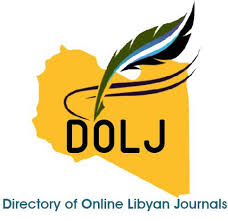Retrospective study on antibiotic prescription patterns in Libyan community pharmacies of Zawia
DOI:
https://doi.org/10.54361/Keywords:
Drug utilization research, prescription patterns, community pharmacy, LibyaAbstract
Out-patient drugs are dispensed through community pharmacies. Drug utilization studies should be periodically performed in order to facilitate therapeutic efficacy and cost effectiveness, decrease adverse effects and provide feedback to prescribers to promote rational use of drugs. This study is a retrospective one which compares drug utilization and drug product cost of different antibiotics in 15 community pharmacies in Zawia, Libya. The study period was three months (January - March 2009). A total number of 512 prescriptions were studied of which, 57% were of male patients. The most frequently prescribed antibiotic (37 occurrences) was amoxicillin. The antibiotic with the highest total treatment cost (LD 551.25) was amoxicillin plus clavulanic acid while penicillin V was the antibiotic with the lowest total cost (LD 3.25). The highest mean cost was LD 52.00 for levofloxacin per patient. The most frequently prescribed route of administration was oral route (73%) and the least was parenteral route (6%). Average treatment period was rounded and found to be five days. In conclusion, the present data indicated an overuse of amoxicillin, in contrast to other antibiotics at least in Zawia, Libya. In the light of growing concerns over antibiotic resistance, the prescribers should consider equally pharmacologically effective and more cost effective antibiotics based on rationale approach. National drug utilization policy will facilitate to achieve these challenges towards achieving rational drug use.
Downloads
References
Ravi P, Shankar K, Sen P, Dinesh K U, Arun KD and Subish P. Drug utilization among surgical out-patients. TMJ. 2006, 56; 2, 3: 230-234.
Helena G. Drug utilization studies. Arquivos De Medicina. 2008, 22; 2, 3: 69-74.
Raveh D, Muallem-Zilcha E, Greenberg A, Wiener-Well Y, Schlesinger Y and Yinnon AM. Prospective drug utilization evaluation of three broad-spectrum antimicrobials: cefepime, piperacillin-tazobactam and meropenem. Q J M. 2006, 99; 6: 397-406.
Hasan MY, Das M and Mourad F. Drug utilization and antibiotic use in the primary health care centres in Sharjah. Eastern Mediterranean Heal J. 1997, 3; 3: 444-451.
WHO international working group for drug statistics methodology. Introduction to drug utilization research. Norwegian Institute of Public Health, Oslo. 2013, http://www.whocc.no/ (accessed on 12-08-2013).
Shankar PR, Pai R, Dubey AK and Upadhyay DK. Prescribing patterns in the orthopaedics outpatient department in a teaching hospital in Pokhara, Western Nepal. J Antimicrob Chemother. 2008, 62; 4: 830-836.
Al-Niemat S I, Bloukh DT, Al-Harasis MD, Al-Fanek AF and Salah RK. Drug use evaluation of antibiotics prescribed in a Jordanian hospital outpatient and emergency clinics using WHO prescribing indicators. Saudi Med J. 2008, 29; 5: 743-748.
Dziurda D, Polak S, Skowron A, Kuschill-Dziurda J and Brandys J. Analysis of non-hospital antibacterial pharmacotherapy in Poland. Int J Infect Dis. 2008, 12; 5: 483-489.
Avci IY, Kilic S, Acikel CH, Ucar M, Hasde M, Eyigun CP, Pahsa A and Cetiner S. Outpatient prescription of oral antibiotics in a training hospital in Turkey: trends in the last decade. 2006, J Infect. 52; 1: 9-14.
Stimac D, Vukusić I and Culig J. Outpatient use of systemic antibiotics in Croatia. Pharm World Sci. 2005, 27; 3: 230-235.
Karatas H, Yalcin AN, Turgut H and Cetin B. Antibiotic usage and costs in the community. Infez Med. 2004, 12; 2: 132-135.
Pedrera V, Schwarz H, Pascual de la Torre M, Gil-Guillén V, Orozco D and Canelles J M. Analysis of antibiotic use in the community of Valencia (2000-2002). Enferm Infect Microbiol Clin. 2004, 22; 7: 385-389.
Sepehri G and Meimandi M. Pattern of drug prescription and utilization among bam residents during the first six months after the 2003 bam earthquake. Prehosp Disaster Med. 2006, 21; 6: 396-402.
Visser LE, Oosterveld M H, Vos GI and De Jong-Van den Berg LT. Drug-utilization study on Curacao, Pharm World Sci. 1993, 15; 2: 73-78.
Nehru M, Kohli K, Kapoor B, Sadhotra P, Chopra V and Sharma R. Drug utilization study in outpatient ophthalmology department of government medical college Jammu. JK Sci. 2005, 7; 3: 149-151.
Calva J and Bojalil R. Antibiotic use in a periurban community in Mexico: a household and drugstore survey. Soc Sci Med. 1996, 42; 8: 1121-1128.
McManus P, Hammond ML, Whicker SD, Primrose JG, Mant A and Fairall SR. Antibiotic use in the Australian community, 1990-1995. Med J Aust. 1997, 167; 3: 124-127.
Roshni N and Narendranathan M. Influence of pharmaceutical marketing on prescription practices of physicians. J Indian Med Assoc. 2013, 111; 1: 47-50.
Downloads
Published
Issue
Section
License
Copyright (c) 2014 Prakash Katakam, Babu R. Chandu, Abdulbaset A. Elfituri (Author)

This work is licensed under a Creative Commons Attribution-NonCommercial-NoDerivatives 4.0 International License.
Open Access Policy
Libyan journal of medical Research (LJMR).is an open journal, therefore there are no fees required for downloading any publication from the journal website by authors, readers, and institution.
The journal applies the license of CC BY (a Creative Commons Attribution 4.0 International license). This license allows authors to keep ownership f the copyright of their papers. But this license permits any user to download , print out, extract, reuse, archive, and distribute the article, so long as appropriate credit is given to the authors and the source of the work.
The license ensures that the article will be available as widely as possible and that the article can be included in any scientific archive.
Editorial Policy
The publication of an article in a peer reviewed journal is an essential model for Libyan journal of medical Research (LJMR). It is necessary to agree upon standards of expected ethical behavior for all parties involved in the act of publishing: the author, the journal editorial, the peer reviewer and the publisher.
Any manuscript or substantial parts of it, submitted to the journal must not be under consideration by any other journal. In general, the manuscript should not have already been published in any journal or other citable form, although it may have been deposited on a preprint server. Authors are required to ensure that no material submitted as part of a manuscript infringes existing copyrights, or the rights of a third party.
Authorship Policy
The manuscript authorship should be limited to those who have made a significant contribution and intellectual input to the research submitted to the journal, including design, performance, interpretation of the reported study, and writing the manuscript. All those who have made significant contributions should be listed as co-authors.
Others who have participated in certain substantive aspects of the manuscript but without intellectual input should only be recognized in the acknowledgements section of the manuscript. Also, one of the authors should be selected as the corresponding author to communicate with the journal and approve the final version of the manuscript for publication in the LJMR.
Peer-review Policy
- All the manuscripts submitted to LJMR will be subjected to the double-blinded peer-review process;
- The manuscript will be reviewed by two suitable experts in the respective subject area.
- Reports of all the reviewers will be considered while deciding on acceptance/revision or rejection of a manuscript.
- Editor-In-Chief will make the final decision, based on the reviewer’s comments.
- Editor-In-Chief can ask one or more advisory board members for their suggestions upon a manuscript, before making the final decision.
- Associate editor and review editors provide administrative support to maintain the integrity of the peer-review process.
- In case, authors challenge the editor’s negative decision with suitable arguments, the manuscript can be sent to one more reviewer and the final decision will be made based upon his recommendations.













